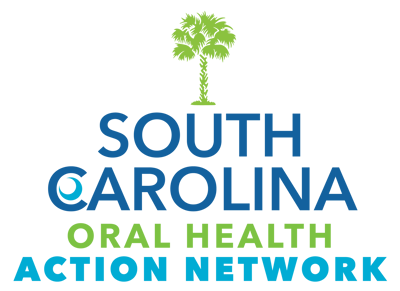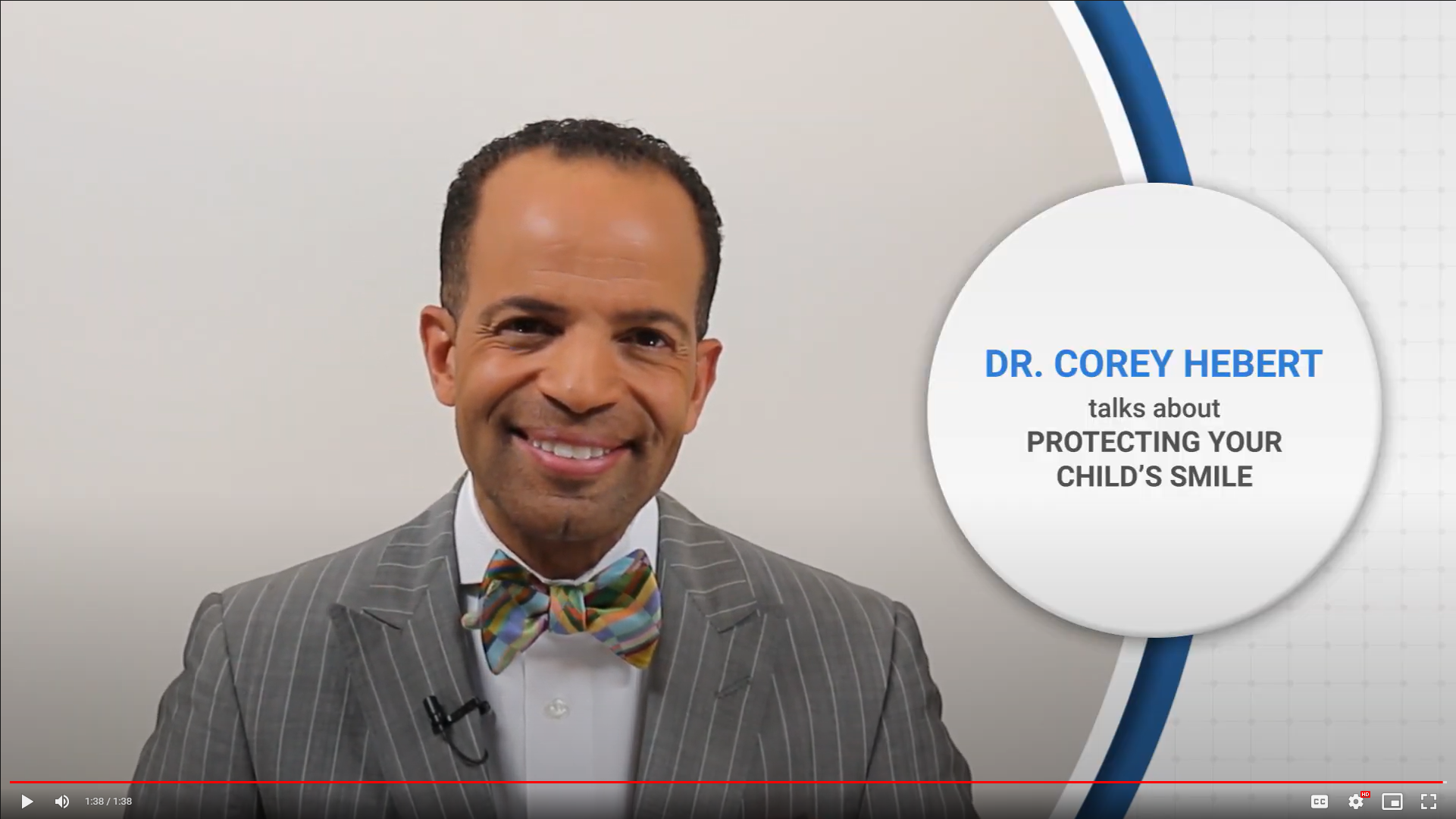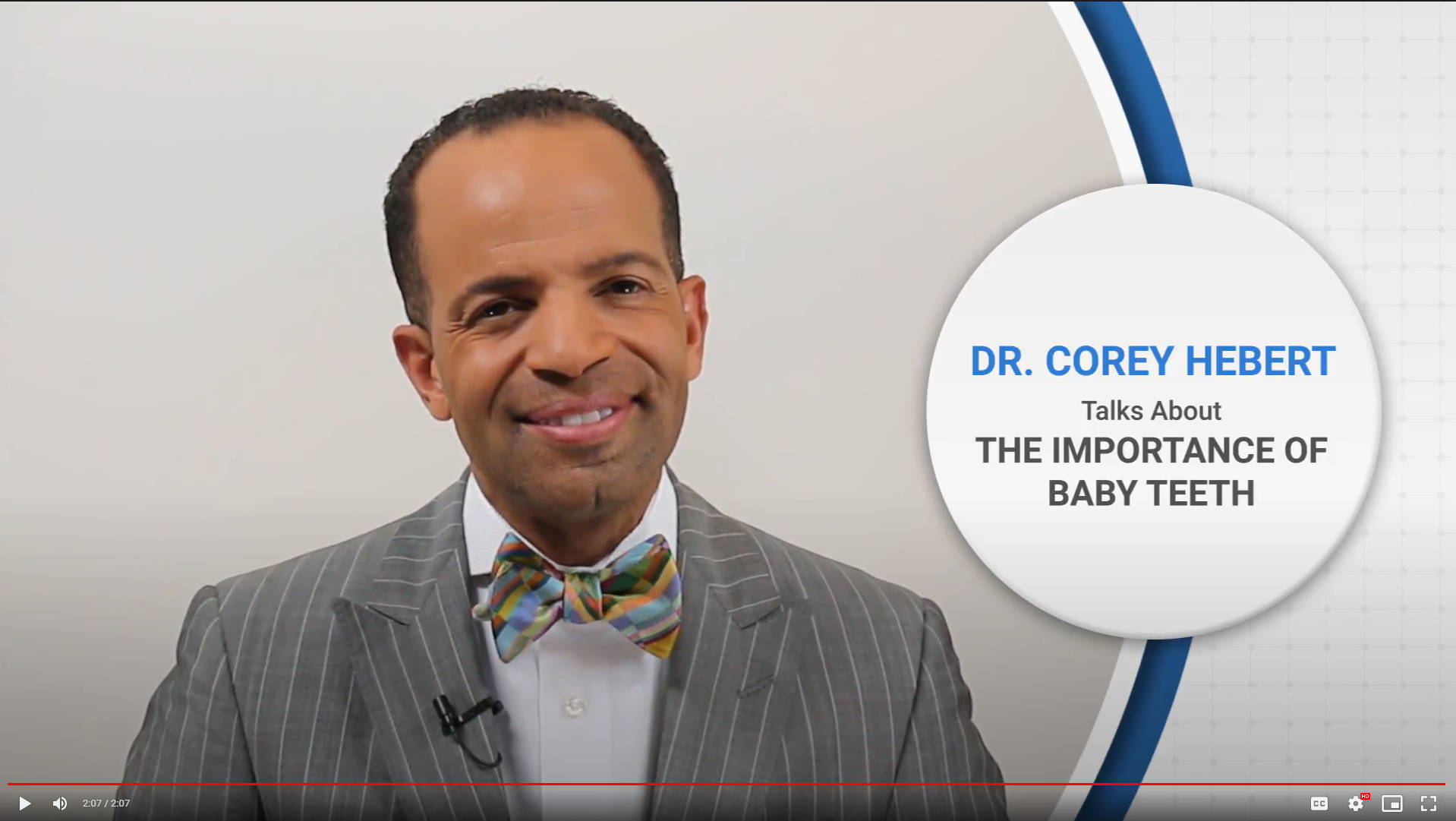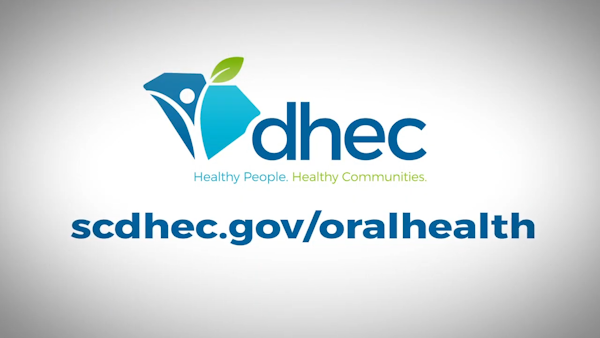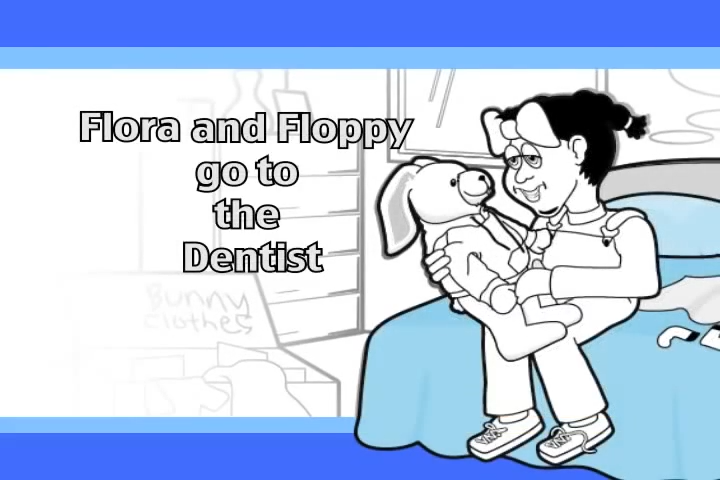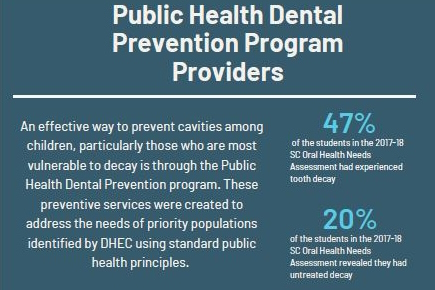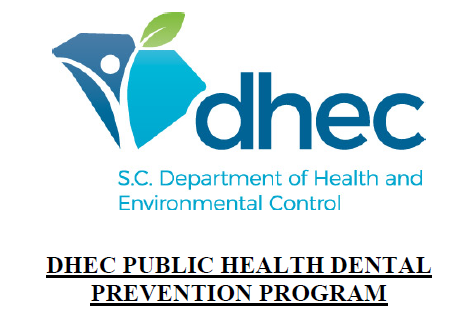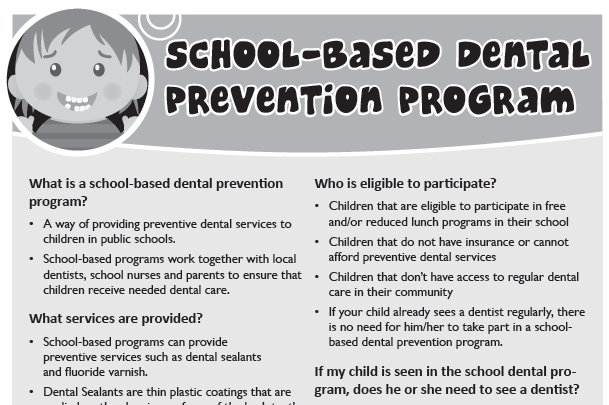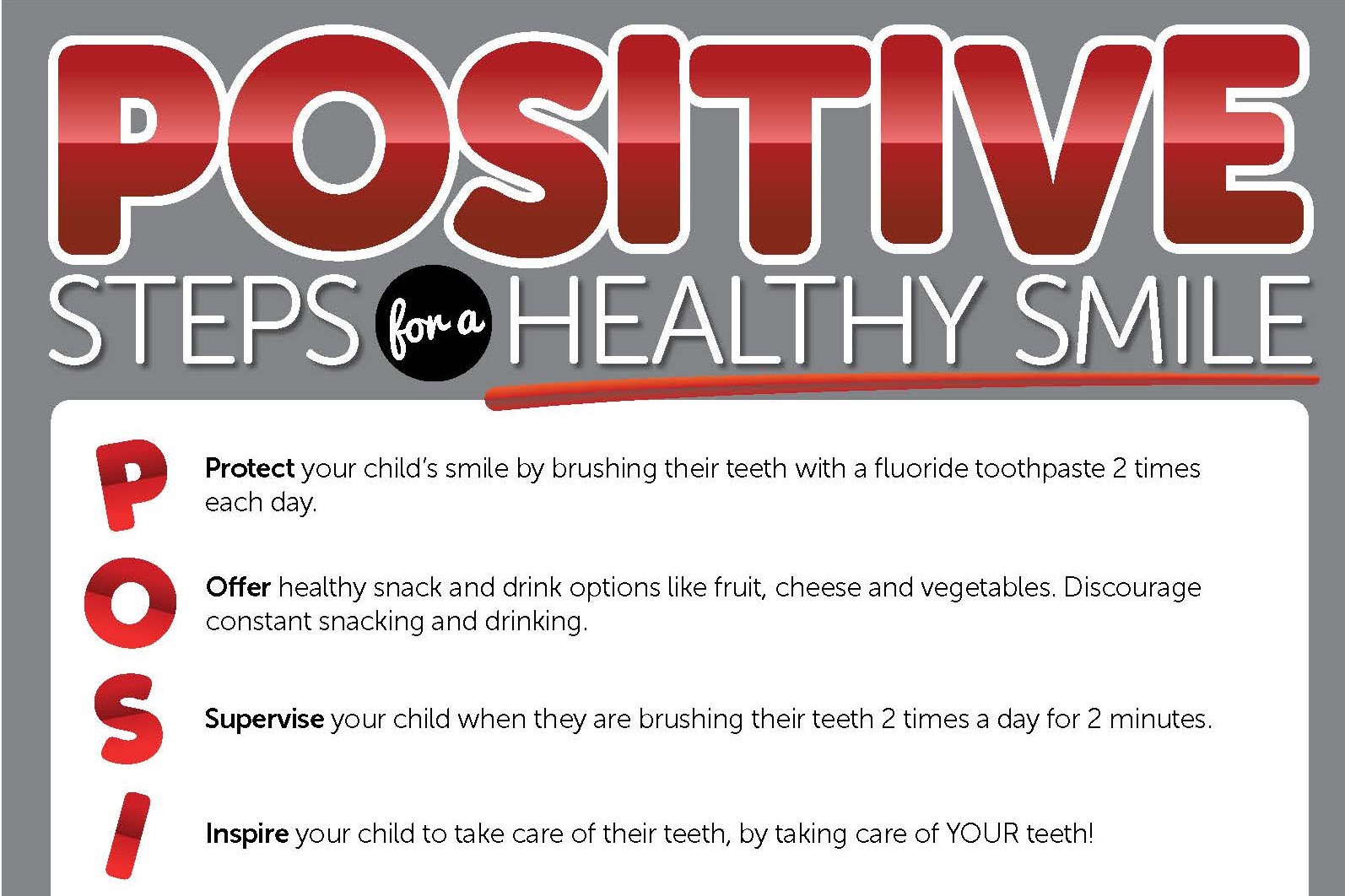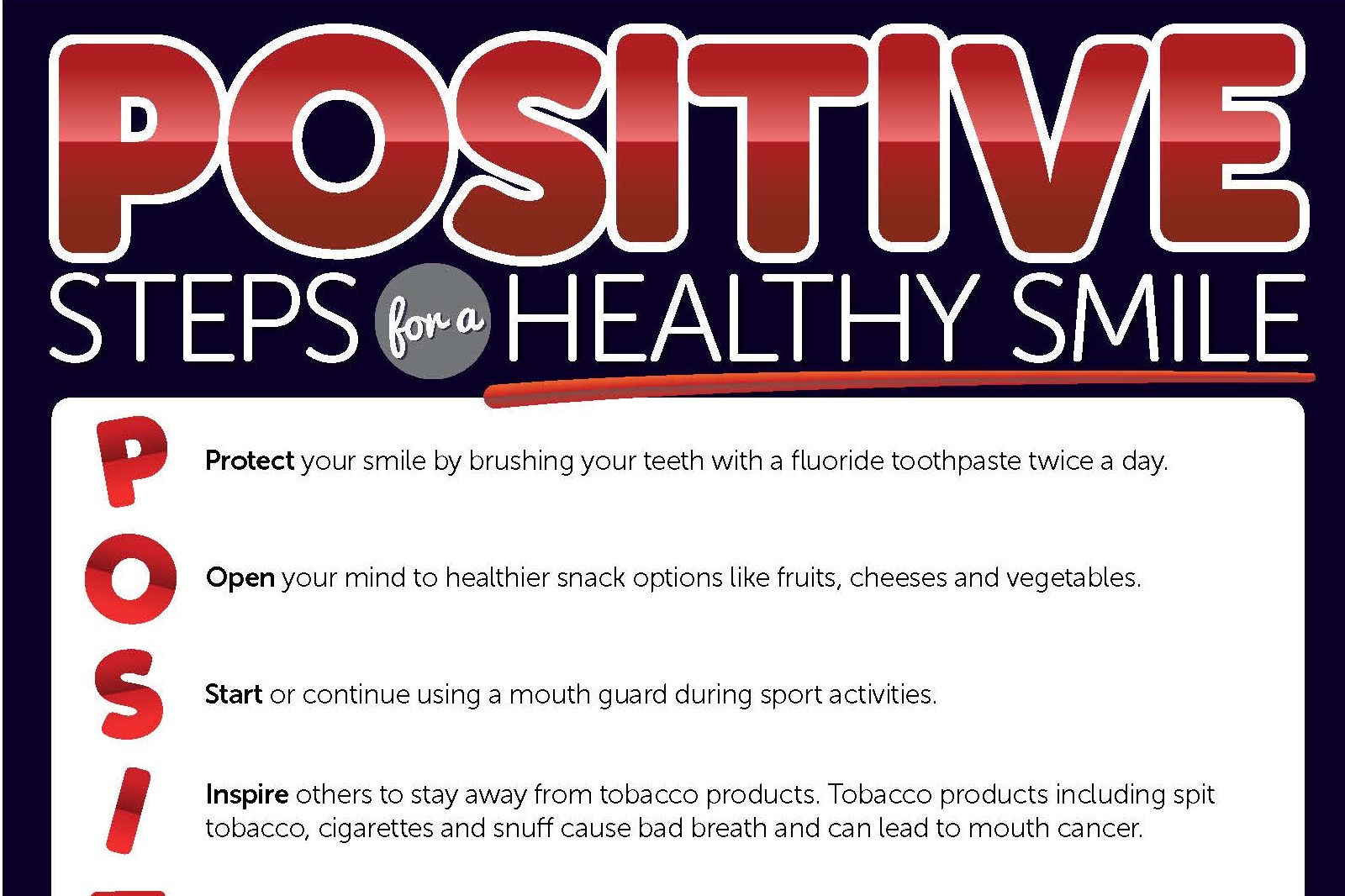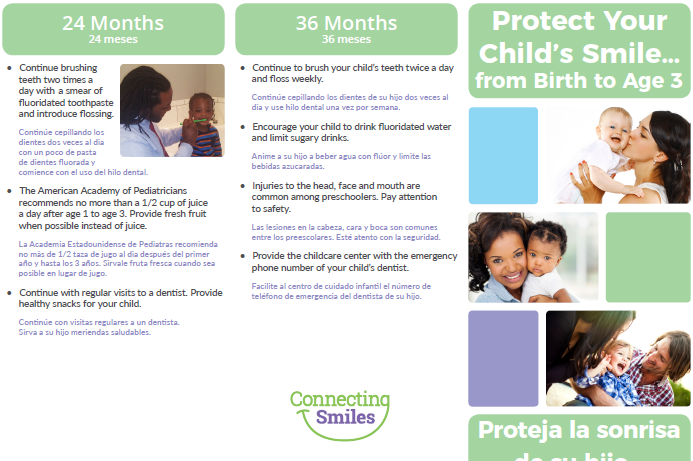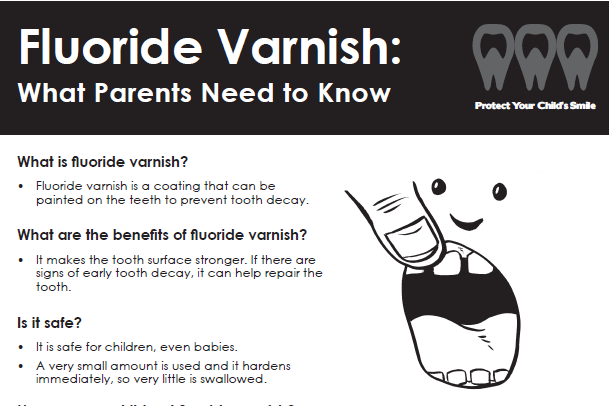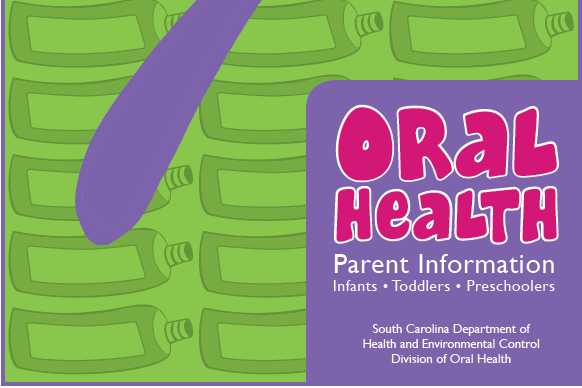Parents and Families
Parents play an important role in establishing early health habits including oral health. Engaged families must be empowered and informed about best practices that protect their child’s smile and put them on the road to good oral health.
Parents can positively impact their family’s oral health by following a few basic steps. These steps include:
- Wipe out your child’s mouth before teeth arrive and then begin brushing teeth two times a day.
- Floss regularly.
- Take your child to the dentist by age one and then continue with regular visits. Happy First Birthday Card (pdf)
- Drink water with fluoride. Drinking Water: What Parents Need to Know (pdf). This dual-language flier explains to parents the benefits of drinking fluoridated water.
- Ask your doctor or dentist about fluoride varnish. Fluoride Varnish: What Parents Need to Know (pdf). This dual-language flier explains the importance of fluoride varnish as a tool to prevent tooth decay.
- Limit sugary foods and drinks and offer food at regular times each day rather than allowing children to snack throughout the day.
Oral Health for Infants/Toddlers: Infant Oral Health Brochure (pdf)
The ADA recommends children attend their first dental visit by age one and continue regular visits. Babies and toddlers need healthy teeth for chewing and smiling. Decayed baby teeth can lead to pain and infection. Poor dental health can affect what your baby can eat, their ability to speak, and their ability to play and learn. The Infant Oral Health brochure offers information and tips to help keep your child’s smile healthy.
Oral Health for Preschoolers: Parent Information Booklet (pdf)
This Parent Information Booklet contains information for parents that is developmentally appropriate and based on recommendations from the Bright Futures in Practice: Oral Health By P. Cassamassimo. The booklet provides easily understandable that promotes a parent’s active role in establishing and maintaining good oral health for their child. General topics include tooth care, selecting the right toothbrush and toothpaste, good nutrition, safety, and dental visits.
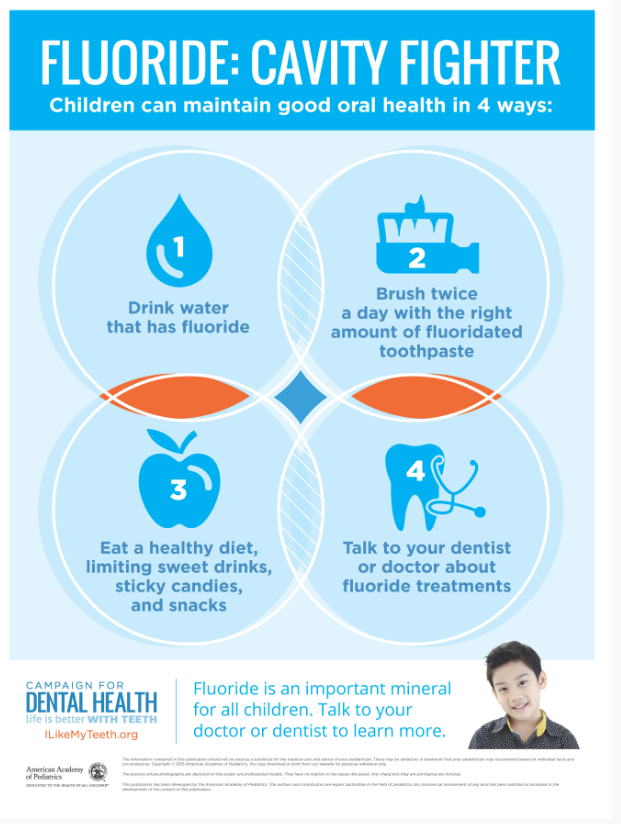
Fluoride is naturally found in most water sources: rivers, lakes, wells, and even oceans. For the past 75 years, fluoride has been added to public water supplies to bring fluoride levels up to the amount necessary to help prevent tooth decay.
In the United States, water fluoridation is not the only form of fluoride delivery that is effective in preventing tooth decay in people of all ages. Use the information listed below to compare the other fluoride products that may lower the risk for tooth decay, especially for people who are at higher risk for decay.
Why Do Children Need Flouride (pdf)
Although these products reduce tooth decay, combined use with fluoridated water offers protection greater than any of these products used alone.
Topical Fluorides
Topical fluorides encourage the remineralization of enamel and inhibit bacterial metabolism, reducing the growth of plaque bacteria. Modes of topical fluoride delivery include:
- Kinds of toothpaste
- Gels
- Mouth rinses
- Varnishes
- Professionally applied fluoride therapies
- Fluoride Supplements
Fluoride supplements are available by prescription only and are beneficial for children who aren’t ingesting enough fluoride through their water supply and diet. According to the American Dental Association, children aged 6 months to 16 years who aren’t drinking fluoridated water and have a high risk for tooth decay can reap crucial benefits from oral fluoride supplements such as:
- Tablets
- Lozenges
- Liquids
- Chewing gums
Oral Health Books
As a parent, it’s up to you to teach & help your kids adopt habits and daily routines as part of a healthy lifestyle. One such habit is teaching your kids the importance of tooth care; brushing, flossing, and visiting the dentist every six months.
For many parents, this is an ongoing challenge and a frequently asked question. Frequently, our answer includes helpful tips and insight. Where applicable, book recommendations for a specific topic to help reinforce and encourage your child to attain optimal dental health–no cavities.
- Open Wide: Tooth School Inside by Laurie Keller
- Tooth by Tooth by Sara Levine
- DANIEL TIGERS NEIGHBORHOOD: Daniel goes to the Dentist
- Josie’s Lost Tooth by Jennifer K. Mann
- The Tooth Mouse by Susan Hood
- Vera Goes to the Dentist by Vera Rosenberry
- Tooth Traditions Around the World by Ann Malaspina
- Chirpy Charlie’s Teeth by Marta Zafrilla
Parent and Family Downloadable Resources
- Bright Futures: The SC Story (pdf) – A report on how South Carolina’s Bright Futures program improved the oral health of children statewide
- Finding Low-Cost Dental Care (pdf)
- Seal Out Tooth Decay (pdf)
- Baby teeth are important! (17×22 Poster)
- A Healthy Mouth for Your Baby (pdf)
Additional Resources
SCDA Dental Clinics
Links to SCDA affiliated low-cost dental facilities, dental programs for domestic violence, special needs dentistry, and medical clinics that may have dental components.
Dental Care Resource Guide
Delta Dental of South Carolina publishes this dental care resource to provide information about low-cost and free options to those who cannot afford dental care. The low-cost and Federally Qualified Health Center (FQHC) options listed provide dental services at a discounted rate or sliding fee scale for those with limited financial means. Free clinics and programs provide services at no cost and are made possible by volunteer dental professionals. It is important to always call the providers listed to ensure eligibility and availability of services. Many require an appointment.
- Upstate Region (pdf)
- Midlands Region (pdf)
- Pee Dee Region (pdf)
- Low Country (pdf)
Dental Benefits
Did you know that South Carolina Healthy Connections Medicaid covers some dental care services for adults and children, one of them being dental sealants among others?
Download the Dental Benefits (pdf) to learn more.
Typically, children should get sealants on their permanent molars as soon as these teeth come in. In this way, dental sealants can protect the teeth through the cavity-prone years of ages 6 to 14. Here is a condensed list of where to get dental sealant services:
- Ask your child’s dentist to apply sealants when appropriate.
- If you need to find a dentist, use Finding Dental Services for Your Child
- Some schools offer sealants as part of a community public health program. To learn more about school sealant programs and if your child is eligible, click here.
- Find a SC DPH Public Health Dental Prevention Program Provider
Individuals with Special Health Care Needs
Common oral health problems can affect all individuals; however, these problems can present particularly difficult challenges to individuals with special healthcare needs. Certain conditions may make it more difficult to keep the oral cavity clean and healthy. Tooth decay is the number one unmet need of children with special health care needs.
For more information, email the Children and Youth with Special Health Care Needs (CYSHCN) Program.
Transportation Beneficiary Information
South Carolina Healthy Connections Medicaid provides transportation beneficiary information to assist South Carolinians with transportation to medical appointments. The transportation resource is available on its website at:
https://www.scdhhs.gov/site-page/transportation-beneficiary-information.
Professional Resources
Medical and dental providers have a crucial role to play in enhancing the oral health of young children and their families. They can provide risk assessments, preventive care, and patient education, thus contributing to overall health and well-being. Achieving total health necessitates the involvement of all individuals responsible for an individual’s health and the recognition of the connection between oral health and overall bodily health. Engaging families where they live, work, and go to school is of utmost importance. Professionals in these areas can positively influence oral health by reinforcing total health themes and providing education and resources. Collaborative efforts can curb the oral health epidemic in South Carolina, leading to stronger and healthier communities across the state.
Useful links for providers
- Medicaid Adult Dental Coverage Checker – The Medicaid Adult Dental Coverage Checker is an interactive tool for policymakers, administrators, and advocates to easily understand where a given state’s Medicaid adult dental benefits package falls on a continuum from no dental benefits to extensive benefits, helping identify areas for improvement and expansion.
- SC Take Action: Oral Health for the Young Child — Updated version coming soon!
- American Academy of Pediatrics
- American Academy of Pediatric Dentistry
- Section of Oral Health at the SCDepartment of Public Health
- Flouride Varnish Training
Provider Downloadable Resources
En Español
Tools for Schools/Resources for Educators
Oral Health Lesson Plans/Teaching Tools
Overview of Supplemental Oral Health Curricula for Preschool, Kindergarten, 2nd and 7th Grade (pdf)
These guides contain lessons that encourage students to take care of their teeth as well as teach them oral health concepts. Each of the student activities in the Oral Health Supplemental Resource Guides includes a list of needed materials, background information, step-by-step instructions, and suggested extension and evaluation activities. These guides are primarily designed for classroom use.
Oral Health Curriculum: Preschool (pdf)
This resource guide is intended for parents and young children to work on together.
Oral Health Curriculum: Kindergarten (pdf)
This resource guide has activities for kids aged 5 and 6. The lessons are designed to involve the young child in hands-on activities that will acquaint them with their mouth and how to care for their teeth; help them learn to like healthy foods; and encourage them to keep their smiles safe. This guide is designed for use in both K-4 and K-5 classrooms.
Oral Health Curriculum: 2nd Grade (pdf)
This resource guide has activities for kids aged 7 and 8.
Oral Health Standards-based Supplemental Curriculum Guide for Grades 1st-2nd and 3rd-5th
The Oral Health Standards-based Supplemental Curriculum Guide contains standards-based lessons and activities designed for elementary students. The lessons are intended to engage children in hands-on, literacy-driven activities that teach them how to take care of their teeth and help them understand why it is important to do so. The booklet also reinforces the importance of choosing healthy foods and encourages students to keep their smiles safe and injury-free. The guide is divided into two sections that include appropriate material for Grades 1-2 and Grades 3-5 as well as take-home information for parents.
Oral Health Curriculum: 7th Grade (pdf)
This resource guide has activities for young teenagers.
Afterschoolers Oral Health Resource Guide (pdf)
This resource guide has activities designed for students in grades 1-5 participating in Afterschool programs. The “lessons” involve the elementary-age child in hands-on activities that will acquaint them with taking care of their teeth and understanding why that is important; teaching them to like and choose healthy foods, and encouraging them to keep their smiles safe and injury-free. This guide is designed for use in childcare centers and schools with after-school programs. It would also be a good resource for homeschool associations and parent and community outreach programs.
Brush up on Healthy Teeth — Simple Steps for Kids’ Smiles (pdf)
Flier to hand out to kids and parents.
Teacher Activities for the Early Childhood Classroom (pdf)
This resource guide has activities for infants through age 4. The “lessons” are designed to involve the very young child in hands-on activities that will acquaint them with their mouth and how to care for their teeth; help them learn to like healthy foods; and encourage them to keep their smiles safe. This guide is designed for use in childcare centers serving infants-preschoolers and would be a good resource for homeschool associations and parent and community outreach programs.
DPH School Dental Prevention Programs
Public Health Manual: SC DPH School-Based Dental Prevention Program (pdf)
The manual provides the dental programs that enter into a Memorandum of Agreement with DPH with clearly stated expectations and standards for the DPH School-Based Dental Program.
SC DPH School Dental Prevention Program Informational Flyer (pdf)
This is information for parents of children in schools served by the DPH School Dental Prevention Program. It describes how the program works and the importance of preventing tooth decay.
Resources for School-Based Dental Programs
K-12 Nurses Screening Guidelines
Students should receive school-based screening for oral disease (the presence of decay, pain, swelling, bleeding, infection, and/or soft tissue lesions) according to the South CarolinaDepartment of Public Health’s (SC DPH) school screening recommendations.
Impact and Value: Telling Your Program’s Story (pdf)
This workbook includes sample data collection tools that can be used to create success stories that highlight their program’s achievements.
Healthy Communities Success Stories
This site provides a worksheet and sample success stories to assist you in developing your success story.
Seal America: The Prevention Intervention
This manual (2007, revised 2011 )This online manual is designed to assist health professionals initiate and implement a school-based dental sealant program to help prevent dental caries in children.
Mobile Portable Dental Manual
This is a manual on how to create an effective mobile or portable dental clinic, based on experience by the Cincinnati (Ohio) Health Department.
Oral Health Message Videos for Students and Teachers
The Columbia Marionette Theater in collaboration with the SC Dental Association and through funding provided by MUSC James B. Edwards College of Dental Medicine through Grant #HRSA/Bureau of Health Professions (T12HP28882) as part of DPH’s Section of Oral Health’s POWER Pee Dee Project, has produced videos for school-age children to share valuable information about oral health.
Two Minutes of Tooth Time
Our Teeth are Important
Flora’s Day at the Dentist
Battle of the Bite!
Oral Health Puppet Show
“Flora and Floppy Go to the Dentist” is a 20-minute interactive puppet show for children ages 3-8. This unique initiative was created as a result of an American Dental Association (ADA) grant that funded the theater to create a traveling puppet show.
The show debuted in the fall of 2008 to over 300 kids at a “Back to School Bash held at the S.C. State Fairgrounds. As of 2021, the show has been seen by more than 85,000 children at schools and Head Start Centers across the state.
“According to the 2018 Oral Health Needs Assessment (OHNA), 40.5 percent of South Carolina children in kindergarten and third grade have experienced tooth decay,” said Raymond Lala, director of DPH’s Section of Oral Health. “The show is a great way to reach children across the state with oral health messages while they are being entertained. The value of this approach is that children learn key concepts about taking care of their mouths and teeth without even realizing that they are learning!”
Some of the messages highlighted in the show include:
- Brushing and flossing teeth
- Going to the dentist
- Getting dental sealants
- Eating healthy foods and limiting sugary foods and drinks
- Drinking fluoridated water
The Columbia Marionette Theater is currently accepting requests for shows. The performances are designed for large groups of students. There are a limited number of free shows offered annually on a first come first serve basis during February. The cost of the show is $275 for locations within a 40-mile radius of Columbia. Add $25 for each 40 miles of travel outside of Columbia.
For more information on scheduling a show, contact the theater directly at (803) 252-7366 or via email at puppetgnomes@msn.com.
